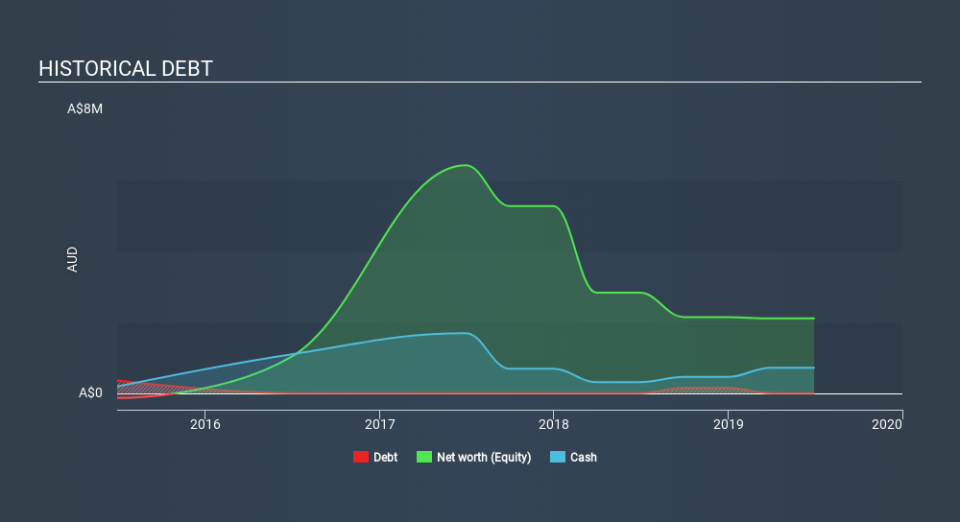Some AssetOwl (ASX:AO1) Shareholders Have Copped A 98% Share Price Wipe Out

This week we saw the AssetOwl Limited (ASX:AO1) share price climb by 17%. But that is meagre solace in the face of the shocking decline over three years. To wit, the share price sky-dived 98% in that time. So it's about time shareholders saw some gains. The thing to think about is whether the business has really turned around.
We really hope anyone holding through that price crash has a diversified portfolio. Even when you lose money, you don't have to lose the lesson.
View our latest analysis for AssetOwl
We don't think AssetOwl's revenue of AU$13,696 is enough to establish significant demand. This state of affairs suggests that venture capitalists won't provide funds on attractive terms. So it seems shareholders are too busy dreaming about the progress to come than dwelling on the current (lack of) revenue. Investors will be hoping that AssetOwl can make progress and gain better traction for the business, before it runs low on cash.
As a general rule, if a company doesn't have much revenue, and it loses money, then it is a high risk investment. There is almost always a chance they will need to raise more capital, and their progress - and share price - will dictate how dilutive that is to current holders. While some such companies go on to make revenue, profits, and generate value, others get hyped up by hopeful naifs before eventually going bankrupt. AssetOwl has already given some investors a taste of the bitter losses that high risk investing can cause.
When it reported in June 2019 AssetOwl had minimal cash in excess of all liabilities consider its expenditure: just AU$559k to be specific. So if it hasn't remedied the situation already, it will almost certainly have to raise more capital soon. That probably explains why the share price is down 71% per year, over 3 years . You can click on the image below to see (in greater detail) how AssetOwl's cash levels have changed over time. The image below shows how AssetOwl's balance sheet has changed over time; if you want to see the precise values, simply click on the image.
In reality it's hard to have much certainty when valuing a business that has neither revenue or profit. Given that situation, would you be concerned if it turned out insiders were relentlessly selling stock? I would feel more nervous about the company if that were so. It costs nothing but a moment of your time to see if we are picking up on any insider selling.
What about the Total Shareholder Return (TSR)?
We've already covered AssetOwl's share price action, but we should also mention its total shareholder return (TSR). The TSR attempts to capture the value of dividends (as if they were reinvested) as well as any spin-offs or discounted capital raisings offered to shareholders. We note that AssetOwl's TSR, at -96% is higher than its share price return of -98%. When you consider it hasn't been paying a dividend, this data suggests shareholders have benefitted from a spin-off, or had the opportunity to acquire attractively priced shares in a discounted capital raising.
A Different Perspective
Over the last year, AssetOwl shareholders took a loss of 49%. In contrast the market gained about 24%. Of course the long term matters more than the short term, and even great stocks will sometimes have a poor year. Unfortunately, the longer term story isn't pretty, with investment losses running at 65% per year over three years. We would want clear information suggesting the company will grow, before taking the view that the share price will stabilize. While it is well worth considering the different impacts that market conditions can have on the share price, there are other factors that are even more important. Case in point: We've spotted 7 warning signs for AssetOwl you should be aware of, and 6 of them are a bit unpleasant.
We will like AssetOwl better if we see some big insider buys. While we wait, check out this free list of growing companies with considerable, recent, insider buying.
Please note, the market returns quoted in this article reflect the market weighted average returns of stocks that currently trade on AU exchanges.
If you spot an error that warrants correction, please contact the editor at editorial-team@simplywallst.com. This article by Simply Wall St is general in nature. It does not constitute a recommendation to buy or sell any stock, and does not take account of your objectives, or your financial situation. Simply Wall St has no position in the stocks mentioned.
We aim to bring you long-term focused research analysis driven by fundamental data. Note that our analysis may not factor in the latest price-sensitive company announcements or qualitative material. Thank you for reading.

 Yahoo Finance
Yahoo Finance 
